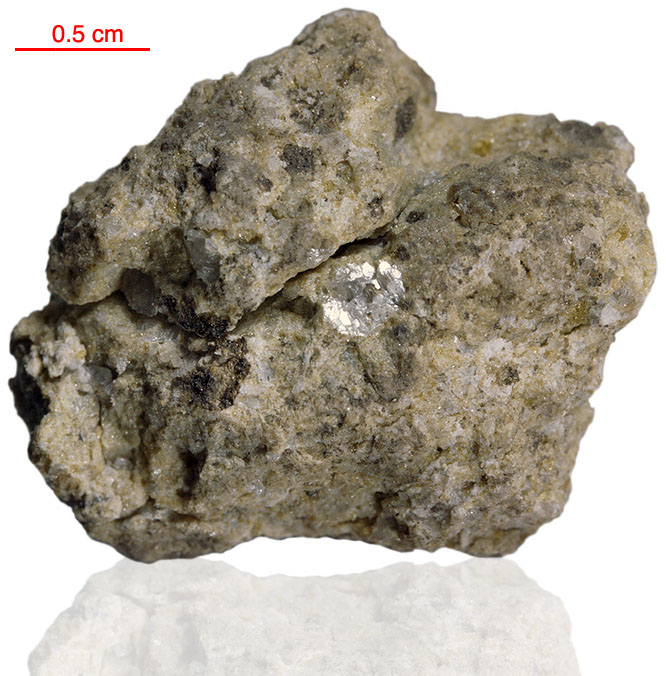78527 (12) Granulitic Noritic Breccia
Collection:
Apollo 17

Click the microscope button to view a
thin section for this sample.
MicroscopeClick the microscope button to view a thin section for this sample.
MicroscopeFact sheet
78527 (12) Granulitic Noritic Breccia
| Rake sample 78527 has the mineralogy of a norite, but it has also been described as a granulite. It has approximately equal amounts of orthopyroxene and plagioclase. Minor phases include olivine, augite, armalcolite, ilmenite, rutile, chromite, baddeleyite, zirconolite, zircon, K-feldspar, metal and troilite. The rock consists of large seriate, subangular plagioclase (up to 2mm) and orthopyroxene (up to 0.8mm) crystals in a fine-grained recrystallized matrix. Minor olivine occurs as large polygonized grains. Olivine and plagioclase-rich regions of the sample are shown in rotations 1 & 2 respectively. The sample weighed 5.16 grams before analysis and has been dated at 4.146±0.017 billion years (Ar/Ar). Further details of this and other Apollo samples are here: http://curator.jsc.nasa.gov/lunar/ |
About this collection
Apollo 17, the final manned landing mission, had two objectives: to obtain samples of ancient rocks from the lunar highlands and to look for evidence of younger volcanic activity on the valley floor.
This small Collection contains material deriving from both periods, including igneous rocks around 4.3 billion years old from the lunar highlands as well as younger volcanic samples dating from about 3.6 billion years ago.
Apollo 17 was launched on 7 December 1972.
Sample details
Collection: Apollo 17
Type
metamorphic
Rock-forming mineral
olivine
pyroxene
plagioclase
Accessory minerals
armalcolite
ilmenite
rutile
chromite
baddeleyite
zirconolite
zircon
k-feldspar
metallic iron
troilite
We would like to thank the following for the use of this sample:






